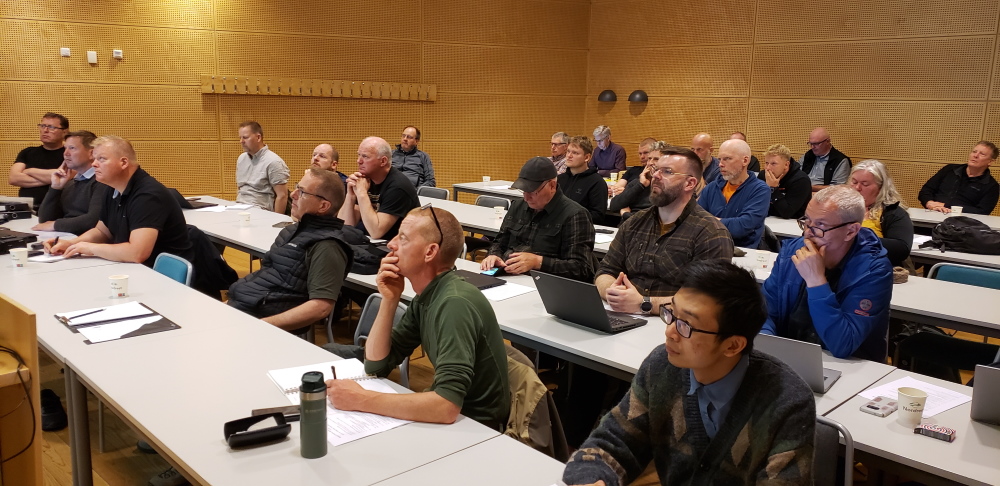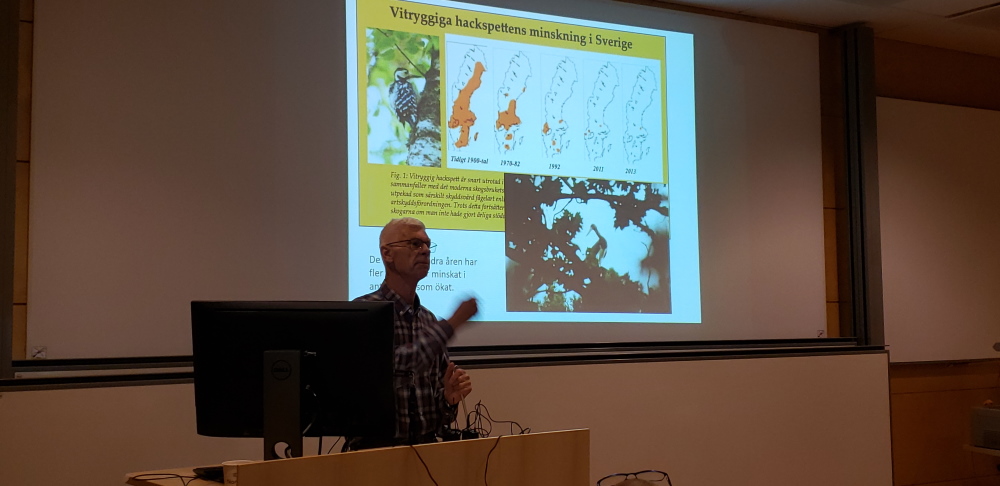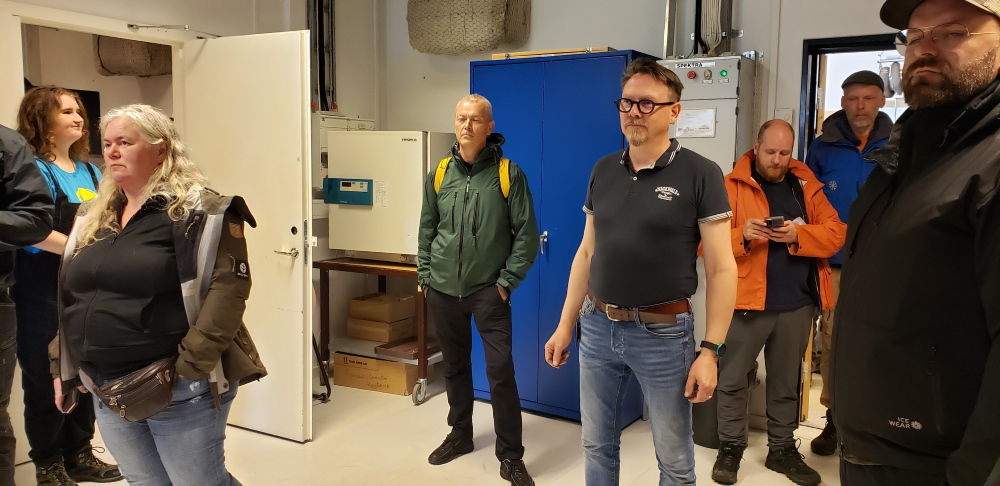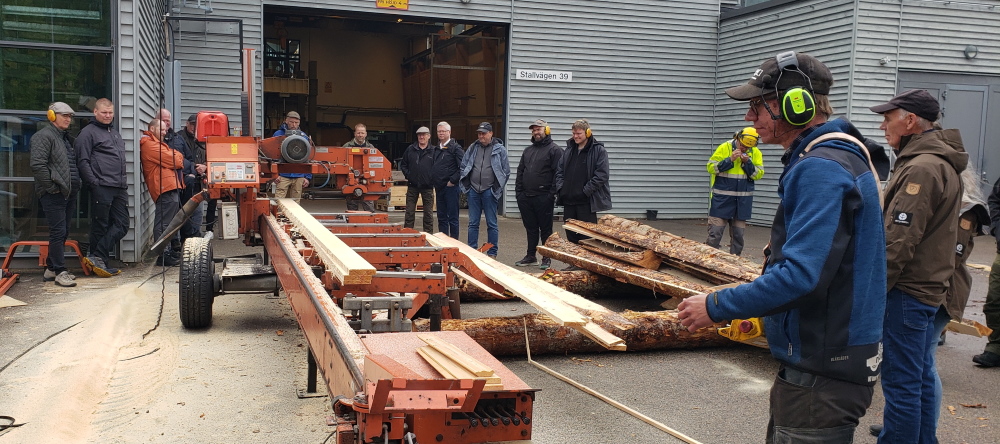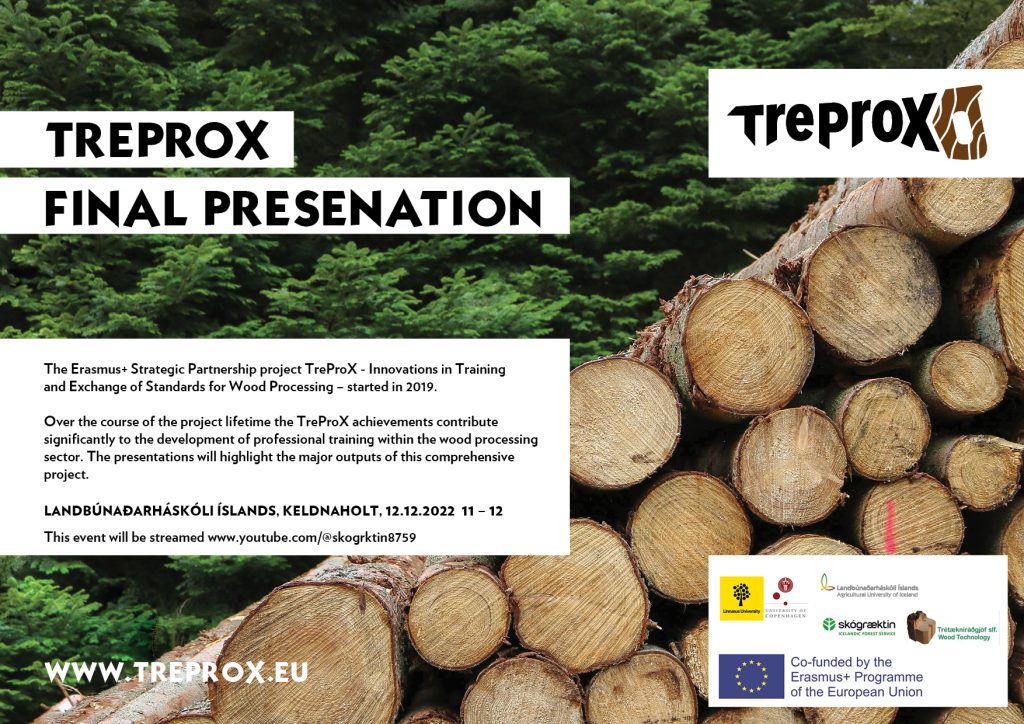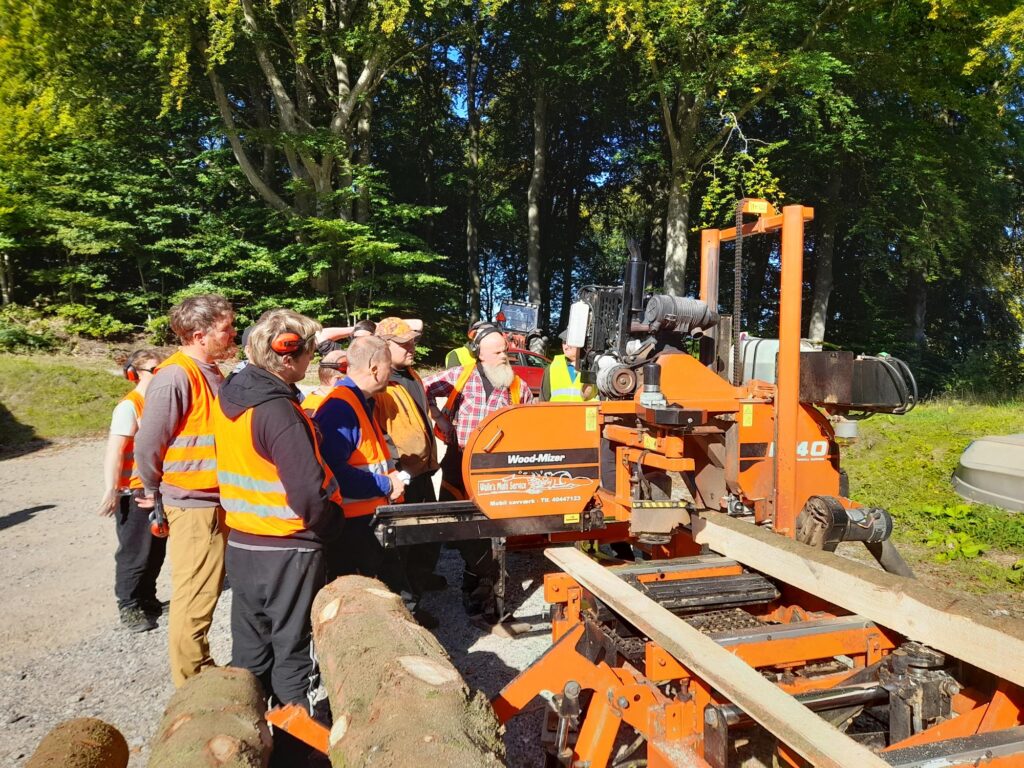
The second workshop of the Erasmus+ project TreProX was held in Sweden in the week 30th of May to the 3rd of June. In total around 30 participants took part in the workshop and the participants were very pleased with the planning and execution of the workshop. On the first day, Monday the 30th of May, the group visited Linné University where the program was started by Sigurður Ormarsson and Jonaz Nilsson, who gave a short introduction about the workshop schedule in Sweden. All participants have been given access to the LNU Moodle system where all information from Sweden will be uploaded. This will be accessible to the participants until the end of the year.
Program of the day.
Sigurður Ormarsson – Kursinformation og kort presentation af LNU.
Sigurður gave a short overview of Linné University, number of students and staff, facilities and areas of teaching and research, with special focus on the field of Forestry and Wood Technology. He mentioned The Bridge, a longtime collaboration between Södra and Ikea where about 300 million SKR come from the collaborators to the LNU. The BS and MSc programs are focused on engineering in wood building, construction and architecture.
Harald Säll, LNU – Presentation of Swedish Forest Industry
Harald works as a teacher with focus on small scale forestry or family forestry. This is one of the most popular courses of the university with about 800 students. Harald went briefly through the history of forestry in Sweden, with emphasis on regulations and laws on forest management. He explained changes in Swedish landscape where biodiversity is decreasing with the advance of forests and loss of meadows. Sweden needs to continue to increase it‘s carbon binding in order for the country to being carbon neutral. In Sweden there about 330 thousand forest owners and they own about half of all forests in the country. They must be in contact with many different official entities to fulfill all legal obligations regarding their forestry. About 1 million people have at least a portion of their income from forests, some have all their income from the forests. He pointed out that at the time when one tree is felled several hundred trees of the same species have already been planted. There is an increasing debate between forestry and nature conservation in Sweden.
Per Darrell, Swedish Nature Conservation Organisation – Naturskyddsforeningens syn på svenskt skogsbruk
Per has visited both Iceland and Denmark where he has studied mosses, which are his speciality. ,,If you do not know the name your understanding of the object will also disappear“ (Om du inte känner til namnen forsvinner også til kunskap til tingen. Carl von Linné). Per talked about natural forests vs. production forests and their respective abilities to withstand diseases and pests. The monoculture in production forests makes them vulnerable to diseases and pests, whereas the higher biodiversity of natural forests increases their resistance to damage. The change from continuing forests to final cut production forests decreases the diversity of species in the forests, many of the species disappear over time, especially when the forest is clearcut (kalavverkad). The climate change is a key factor that influences changes in forests, especially when it comes to biodiversity.
Andreas Arvidsson, Biometria
Biometria is owned by both the sawmills and the timber buyers in Sweden and belongs to the private sector. Andreas gave an overview of the history and the organization of the company but he is the district manager for Skåne (former East Denmark). The company is responsible for quality and quantity assessment of different variables in timber in forestry in Sweden. He went through the quality demands that all timber has to withstand.
After lunch Andreas and Jonaz Nilsson demonstrated how to grade different logs of timber outside the laboratorium. A private contractor, Mattias Hedin, owner of Mattias Mobilsåg, brought his transportable sawmill and sawed several of the logs to demonstrate how the visual defects on the outside of the logs affected the timber inside the log.
The final item on the agenda was a tour by Peter Lerman, LNU og Sigurður Ormarsson, around the laboratorium where the university does it research on wood drying and wood strength.

